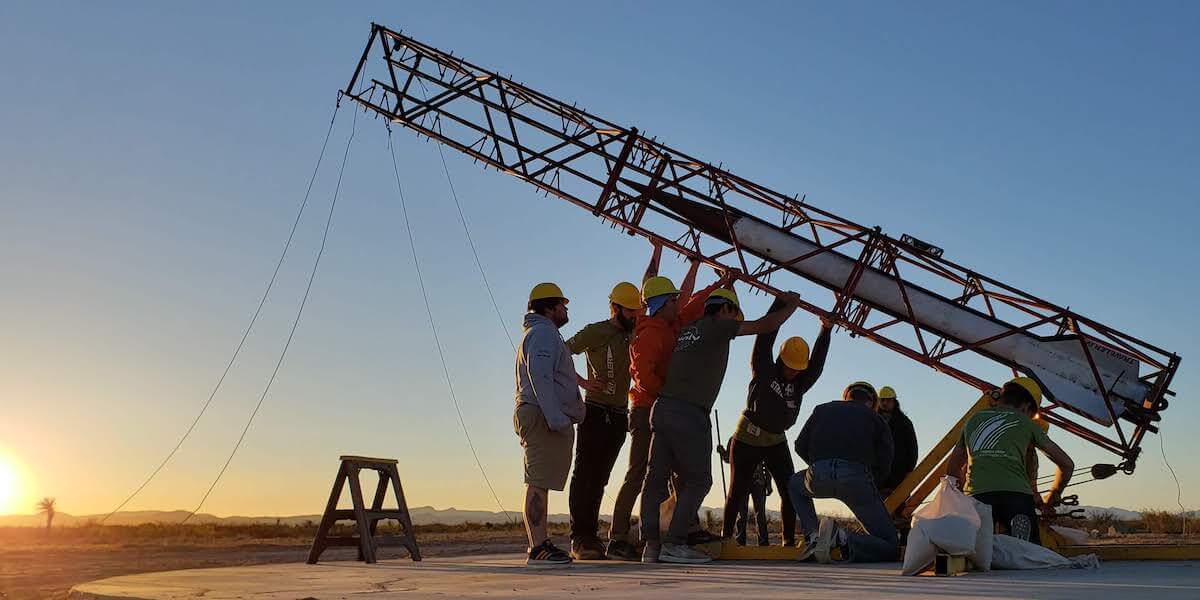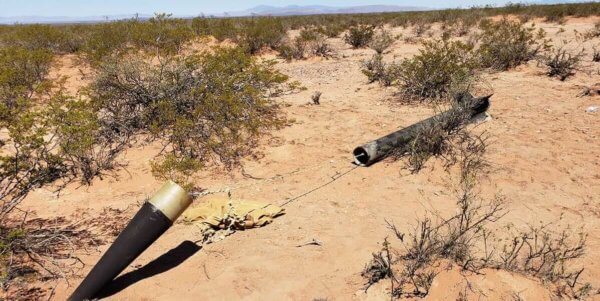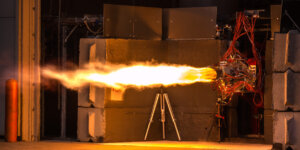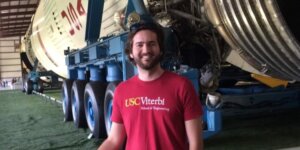
Students from USC’s Rocket Propulsion Laboratory prepare Traveler IV for launch. PHOTO/ COURTESY NEIL TEWKSBURY
With additional reporting by Conor Hayes.
From the sparsely populated and sun-drenched desert campus of Spaceport America in New Mexico, the USC Rocket Propulsion Laboratory (RPL) weeks ago became the first undergraduate team to design, build, and successfully launch a single stage rocket past the Kármán line, as reported by Dennis Smalling, chief student engineer of RPL.
A distinguished student-run and organized undergraduate rocket lab at USC, RPL was founded with the aim of launching and recovering the world’s first entirely student-designed and fabricated rocket into outer space. At 8 a.m. on April 21, Traveler IV surpassed the world altitude record for student rocketry teams. In doing so, RPL more than doubled its previous record, set by its own Fathom II in 2017, culminating 15 years of development in experimental rocketry and propulsion systems.
Reaching 340,000 feet (with a margin of error of +/- 16,800 feet), it seems they might’ve also fulfilled their founding mission. “We can say with 90 percent certainty that RPL’s latest spaceshot, Traveler IV, passed the Kármán line, the recognized boundary between the Earth’s atmosphere and space,” said Neil Tewskbury, lead operations officer at RPL.
Fourth Time’s A Charm
Following the unsuccessful fall launch of Traveler III in Black Rock Desert, which left the rocket in pieces too small to display, RPL members were cautiously optimistic. Against the roar of the 8-inch diameter, 13-foot-tall rocket erupting out of the launch tower, hushed gasps could be heard from spectators, who had been ordered into silence to allow communication between the operations team, the avionics team, and the rocket itself. Everyone remembered Traveler III and the miscommunication issues that had obliterated that rocket in the Nevada desert last September.
But the fourth time was the charm.
Traveler IV rapidly accelerated at over 17g’s to its top speed of 4970 ft/s, or Mach 5.1, over the course of its 11.5 second motor burn, then cruised the remaining 140 seconds, until reaching its maximum altitude of 340,000 feet or 103.6 kilometers. RPL’s avionics system, custom-designed and built by RPL’s large team of student avionics engineers, recorded the flight using its onboard sensors and deployed the vehicle’s parachutes at apogee, allowing the rocket to safely glide down to earth.
In total, the flight lasted a triumphant 11 minutes.
Smalling, who graduated from the USC Viterbi School of Engineering this May, said, “Traveler IV was an incredible success for USC RPL. After nearly 15 years and over a million hours of work, RPL has finally achieved its goal of being the first student group to launch the first student designed and built rocket past the Kármán line.”
He added, “The ability of this team to overcome setbacks and continuously innovate new technology has been inspiring. I’m so proud of what this lab has been able to accomplish so far and I’m incredibly excited to see where RPL goes from here.”
In response to hearing of RPL’s successful April launch, USC Viterbi Dean Yannis Yortsos said, “We are proud of the tradition and of the indomitable spirit of innovation and perseverance of the RPL teams over the years. This remarkable moment is a testament to their ingenuity and dedication. Such learning experiences create a new breed of engineers, who, like many of their RPL predecessors, are poised for a making positive change in the world.”

USC RPL’s Traveler IV, fully recovered after its record shattering flight. PHOTO/ NEIL TEWKSBURY
Journey to Space
As visitors to RPL well know, the path to success is paved with many failures. Traveler IV’s spaceshot predecessors Traveler I and Traveler II are among the mangled rockets strung up from the lab’s high ceilings—the former a victim of a mid-flight solid motor explosion, the latter torn nearly in half by the failure of its filament-wound carbon fiber casing.
These carcasses serve as emblems of lessons learned, which is why RPL’s 90-plus students spend all hours of the day and night working underneath them. In a laboratory where students find the space to apply classroom lessons into practical experiences, resilience forms the backbone of experimentation. In other words, with every disappointment, RPL members found a renewed motivation.
The journey to Traveler IV represented over a decade of technological advancements, process improvements and design changes, not to mention countless hours spent building and improving high-powered rockets of all shapes and sizes. During that span of time, RPL—known for its ability to turn advanced designs into real-world, working vehicles—has become a hotbed for recruitment into commercial space companies like SpaceX, Blue Origin, and RPL-alumnus-founded startup, Relativity Space.
Traveler IV is the most technologically advanced vehicle that the USC Rocket Propulsion Laboratory has ever flown. Its record-breaking apogee of 340,000 feet, +/- 16,800 feet, is based on a well-documented internal analysis. At this time, there has not been an independent, external evaluation of this data.
Hands-on experience
RPL was founded in 2004 by student Ian Whittinghill with the aim of launching and recovering the world’s first entirely student-designed and fabricated rocket past the Kármán line.
“RPL and other hands-on student groups are crucial for giving the students understanding of and experience with how actual vehicles and systems work,” said USC Viterbi professor of astronautics and aerospace and mechanical engineering, Dan Erwin, the group’s first advisor.
The student team is currently advised by David Barnhart, USC Viterbi research professor in astronautics and director of the Space Engineering Research Center. “People often ask why USC encourages students to participate in building amateur rockets,” he said. “Besides the incredible hands-on experience that translates what they learn in the classroom to a functioning rocket, this is typically the first time many have built and created something this large as a team. The fact they do it themselves and benefit from a unique introduction to astronautics provides incredible motivation and excitement that lasts throughout their careers.”
Looking forward, the RPL team isn’t wasting any time. They have already begun design work on the next mission—a liquid-fueled vehicle aimed at its own world record. In addition, they have begun conceptual work for ever-more ambitious projects like CubeSat deployment, active rocket stabilization, and new solid engine designs.
All of this work continues under a new paradigm for members of RPL in which the sky is no longer the limit.
Published on May 22nd, 2019
Last updated on June 16th, 2019











